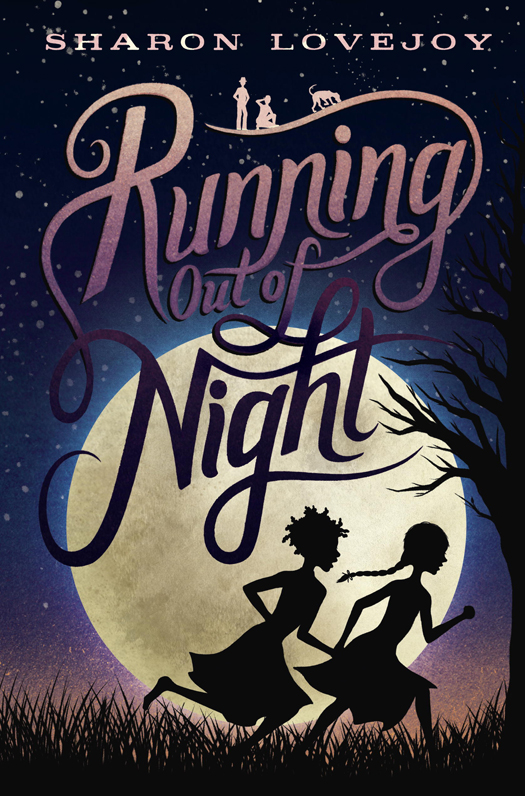
Running Out of Night
فرمت کتاب
ebook
تاریخ انتشار
2014
Lexile Score
830
Reading Level
4-5
ATOS
5.3
Interest Level
4-8(MG)
نویسنده
Sharon Lovejoyشابک
9780385378468
کتاب های مرتبط
- اطلاعات
- نقد و بررسی
- دیدگاه کاربران
نقد و بررسی

September 29, 2014
Inspired by her ancestors’ letters, nonfiction author Lovejoy (The Little Green Island with a Little Red House) sets her first novel in antebellum Virginia as she follows two girls seeking their freedom—one from slavery, the other from her family. Ever since the death of her mother during childbirth, the narrator, now 12, has been abused and denied a name by her Pa (she later becomes known as Lark for her birdlike whistle). After Lark helps to hide Zenobia, a runaway slave (who Lark’s Pa and brothers are hunting for), the girls decide to run off together. On the danger-filled trek east toward the Quaker village of Watertown, the girls take turns rescuing and aiding each other, meeting another runaway slave, a boy named Brightwell, as well as Auntie Theodate, who runs a safe house. Written in a believably rough-edged dialect (a glossary is included) and distinguished by lively descriptions and dialogue, Lovejoy’s story offers a tense account of the perils facing those who sought freedom in the lead-up to the Civil War. Ages 9–12.

October 1, 2014
Lively characterization and an intimate portrait of the natural world enrich this tale of an abused white girl in antebellum Virginia who shelters, then joins an enslaved runaway in search of freedom. Known only as "girl" to Pa and her brothers, the narrator leads a life that makes Cinderella's seem like a sinecure. Joining Zenobia, who's seen her own family separated and sold, isn't a hard call. Their journey, closely pursued by Pa and others determined to find the runaway and collect the large reward, is harrowing-also empowering. Life as a drudge has given Lark, as Zenobia names her, the practical skill set they'll need to evade thunderstorms, copperheads and slave hunters, among other antagonists. They find allies, too: other runaways and an abolitionist Quaker community. Lark's vivid and compelling, her dialect convincing. Lovejoy's sometimes-quirky knowledge of local history and extraordinary gift for writing about nature flavor the story, lending authenticity to Lark's closely observed world and informing the ingenious plot. One issue is troubling: Readers are invited throughout to compare the girls, to see Lark's pre-escape life as no better than slavery, an analog to it. While suggesting equivalency might help white readers identify with black characters, this device subtly downplays the enormous differences in their statuses in a society whose economy, laws and culture rested on those differences. Lush, detailed, total-immersion storytelling. (author note, glossary) (Historical fiction. 9-12)
COPYRIGHT(2014) Kirkus Reviews, ALL RIGHTS RESERVED.

August 1, 2014
Gr 4-7-When Zenobia, a fugitive slave, creeps onto the porch of an 1858 Virginia home, the white girl inside schemes to prevent her abusive father from spotting the escapee. Denied a name and mistreated by her motherless family, the girl quickly concludes that her circumstances look little better than plucky Zenobia's and the two resolve to flee together. Neither one has a route planned; still, equipped with determination, good-luck charms, and a prodigious amount of plot-finagling by Lovejoy, they continually elude the passel of slave catchers and incensed family members chasing them. Narrator Lark (her new friend gifts her the name) and Zenobia, joined by an older teen slave, aim for the Quaker town of Waterford, where Lark believes folks will aid in their escape. Throughout the somewhat haltingly paced tribulations they encounter-the town proves vulnerable to the one-dimensional villains trailing the group and illness or injury strikes all three-Lark displays a charming resolve to survive as a trio, an attitude most audiences will find winning, if unlikely and possibly ill-advised. The rural, mid-19th-century dialect, coupled with the author's interest in ethnobotany, roots the story deeply in the houses, forests, gardens, and even streambeds of antebellum Virginia; Lark's knowledge of plants allows for a satisfying, flora-induced revenge on one slave runner. Unfortunately, a contrived showdown tidies away the rest of the menacing trackers and the abrupt ending feels a mite cheery for the reality of a poor, newly orphaned girl and two fugitive slaves who haven't even made it out of Virginia. Some readers will suspend their disbelief, however, to enjoy the triumph of these intrepid souls.-Robbin E. Friedman, Chappaqua Library, NY
Copyright 2014 School Library Journal, LLC Used with permission.

November 1, 2014
Grades 4-7 When Zenobia, a young runaway, turns up on the porch of her father's northern Virginia cabin, a neglected and abused 12-year-old white girl takes the slave in and hides her until they can both flee. Zenobia becomes the first friend Lark ever had. Joined by a third young runaway, Brightwell, they make their way down Catoctin Creek toward Waterford, where they hope to find help in the Quaker community. They're captured but escape from slave hunters only to narrowly escape Lark's father. Even inside Auntie Theodate's house in Waterford they're not safe. Lark tells this suspenseful story in her own distinctive, believable voice, her strong dialect indicated through dropped endings and consistent errors in grammarno apostrophes get in the reader's way. Tiny chapter-opening sayings add atmosphere. What stands out most is the author's depiction of the rural Virginia setting. Lark's knowledge of the natural world leads to a satisfying, nonviolent resolution. An Underground Railroad story with a distinctive flavor.(Reprinted with permission of Booklist, copyright 2014, American Library Association.)

























دیدگاه کاربران